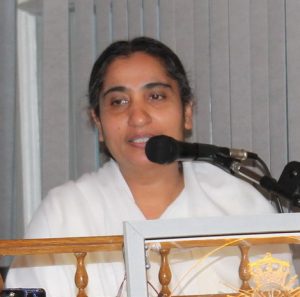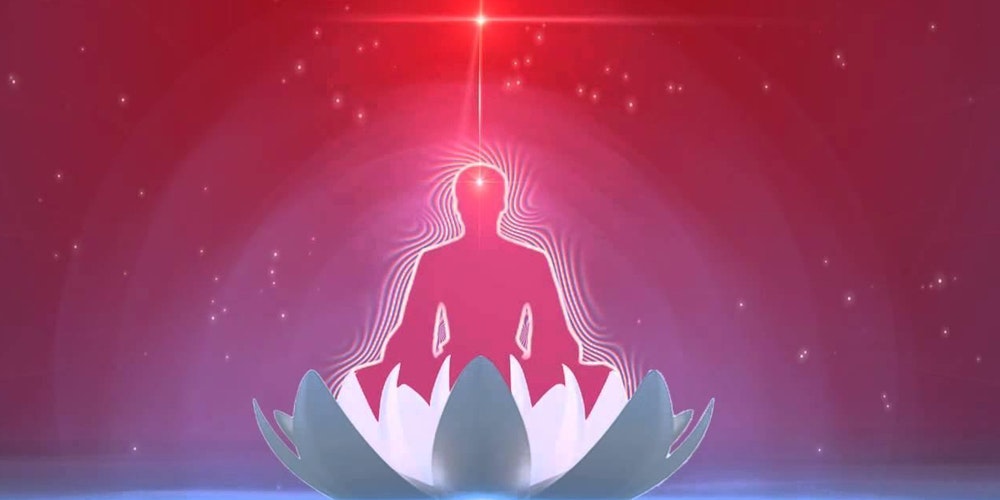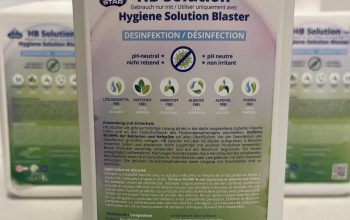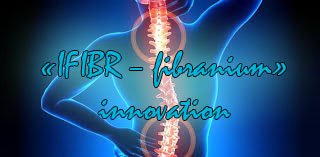
K. Santosh, PhD, Professor
Director general, Brahma Kumaris Centre, St. Petersburg
“There is a deep connection between my inner world of thoughts, feelings, vision and attitude with my outer physical world, starting with my body. Our thoughts and feeling affect our lifestyles. Our lifestyles affect our performance and our health. Understanding this connection will help us to conquer stress and guide us back to an overall state of health at all levels, i.e. spiritual, mental, emotional and physical.
These words by Dadi Janki, a 97 years old (or better to say, 97 years young) chief of the Brahma Kumaris World Spiritual Organization, reflect the basic principles and approaches that the Brahma Kumaris team of “3D Health Care” project have been using for a number of years in the field of prevention and treatment of coronary artery disease.
Coronary artery disease (CAD) is a major cause of premature mortality and disability in both developing and developed nations. CAD is now widely recognized as a lifestyle disease; hence its management should be lifestyle modification. The lifestyle intervention studies in small number of CAD patients have shown that dietary modifications, physical exercise and stress relaxation techniques can curtail progression of coronary blockages and decrease the frequency of angina and heart attacks. Recent investigations have provided convincing evidence that the present prevalent outer self (body, role, material) conscious approach can lead to activation of psychosocial factors like depression, anxiety, anger, hostility, isolation and chronic life stress. These factors can contribute significantly towards development and promotion of CAD by encouraging adoption of unhealthy lifestyle behaviours like smoking, cholesterol-rich diet and sedentary habits.
The objective of the “3D Health Care” study held by the Global Hospital and Research Centre affiliated to the Brahma Kumaris World Spiritual University has been to develop a user friendly healthy lifestyle program and to determine its efficacy in regression of established CAD. The unique feature of this program is that it focuses on self-responsibility and self-empowerment as the basis for regression of coronary atherosclerosis and reduction in coronary events through intensive information, education and counseling provided to patients of CAD.
123 angiographically documented CAD patients were chosen to participate in this study at the Global, Mount Abu, India. The inclusion criteria were: angiographically documented stable CAD with more than 50% stenosis in at least one major artery, coronary angiography having been performed within the last 6 months to one year.
Four principles, intrinsic to Rajyoga, which underlie the program ethos are: 1. Self-responsibility through self-empowerment. The word ‘healthy’ is derived from two words: ‘heal’ + ’thy’ i.e., to heal yourself. To heal oneself, one needs to be empowered by appropriate and proper information about heart, mind-body connection, psychological and conventional risk factors, stress-management, diet, exercise, sleep, substance abuse and usual medical care.
- Self-awareness.The Hindi word for healthy is ‘swasth’, which consists of swa-, meaning ‘inner self’, and -sth, meaning ‘conscious’, so the word ‘healthy’ could also mean ‘inner self-conscious’. Outer self-consciousness (of body, role or material things, which are ever-changing and mortal) leads to instability and insecurity, which in turn leads to anger, anxiety, depression, type A behaviour, isolation and chronic life stresses. Conversely, inner self-consciousness (of spirit, which is enduring and immortal) leads to stability and security, which in turn leads to peace, love and happiness. So, by abstraction, a healthy lifestyle means an ‘inner self-conscious lifestyle’.
- Multi-dimensionality.The current medical approach addresses only one dimension, the physical body, which might explain why despite medical advancements the epidemic of CAD has not been curbed. A human being is not one-dimensional. Therefore, a new model of health, ‘Soul-Mind-Body Medicine’ (three dimensional healthcare) is called for. As per this new model, health is a dynamic process of harmony in flow of spiritual energy (knowledge of truth, purity, peace, love, happiness, bliss and power), mental energy (Positive T.E.A.M.: thoughts, emotions, attitudes and memories) and physical energy (healthy diet, exercise, sleep and medication).
- Biological clock. When activities are in rhythm with one’s biological clock, they reduce energy expense and stress, and prove beneficial for the health of mind, intellect and body. All four principles should be sustained as far as possible in daily living.
The three major components of “3D Healthcare: Healthy Lifestyle” program were:
- Stress-management through Rajyoga meditation. Stress is defined as mental state in which the internal and external pressures exceed the inner strength (coping mechanism) leading to sympathetic over activity and release of stress hormones which in turn leads to vicious cycle of mental dis-ease and physical disease. Inner strength can be increased by Rajyoga. Rajyoga word has been derived from “Raja” meaning “king” and “yoga” meaning “union” between Soul (spiritual energy) and Supreme Soul (ocean of spiritual energy). Rajyoga meditation harmonizes spiritual, mental and physical energy, thereby increasing inner strength to lead a stress-free and healthy life. It enhances individual’s power of determination to manage and practice positive thoughts, emotions, attitudes, memories and adhere to healthy diet, exercise, sleep, medication and cessation of smoking. Expert Rajyoga teachers from the Brahma Kumaris taught Rajyoga meditation to the participants of the study in three different stages. During Stage-I (Inner self empowerment), patients were provided knowledge about Soul and Supreme Soul and trained to forge a link with the Supreme Soul to draw spiritual energy. In Stage-II of opening and healing the mind, patients were made to understand the role of non-physical factors like depression, anger, cynicism, hostility, ego, jealousy, hurry, worry, anxiety, fear, isolation, lack of social and emotional support, job and family stress etc, in the development of CAD; as these negative traits are acquired from the environment and are not part of the original inner self. They were trained to inculcate the positive mental energy thereby enhancing willpower to adhere to healthy and happy lifestyle program. In stage-III of opening the coronary blockages by Rajyoga meditation, they were asked to focus the inner, radiant spiritual energy on various organs of the body including the stenosed arteries for regression of the disease. A meditation commentary was provided to guide the mind in a positive direction. They were encouraged to maintain an inner self (soul) conscious mental state even while engaged in day-to-day work activities.
- Low fat, high fiber vegetarian diet.The essential components of diet program were: what? (low fat, high fiber vegetarian), when? (as per biological clock) and how? (proper chewing in inner self conscious state). Beneficial effects of the prescribed diet were explained both to the patients as well as their spouses by audio-visual means and practical demonstration sessions by the experts. The spouses were given the recipes of the diet used and also taught the cooking methods. Smaller and more frequent meals were provided. Diet was served in silence with light music played to enhance the quality of environmental ambiance.
- Moderate aerobic exercise.Patients were individually prescribed brisk walk for 30-45 min in the morning after the sunrise and 30 min of stroll during the evening before the sunset according to their baseline exercise tolerance. The exercise routine included warming-up period of 5 min, walking for 20-35 min, and cooling down period of 5 min. They were advised to walk in silence (inner self conscious state) and avoid walk after the meals or during extreme cold or hot climatic conditions.
Follow-up: After the first 7 days in Mount Abu (the Brahma Kumaris headquarters in India), patients participated in daily support sessions, of 30-45 minutes, at their local Brahma Kumaris Rajyoga centers. To ensure proper adherence, weekly group support sessions facilitated by Regional co-ordinators and Rajyoga teachers addressed their day-to-day challenges. Every month the CAD project team visited three tertiary medical centers in Ahmedabad, Delhi and Mumbai for follow-up, assessment of clinical status and program adherence. Those inaccessible were sent questionnaires with self-addressed, stamped envelopes. At 6-monthly intervals, patients and their spouses were invited for follow-up and reassessment. The study parameters were repeated at 6,12,18 and 24-month intervals, and patients were advised to have repeat angiography after two years of follow-up. These patients were monitored for cardiac events until 30 June, 2006.
Brief results: 1. Highly significant improvements in symptoms like angina, breathlessness, palpitations etc.
2. Healthy improvement in psychological parameters.
3. Highly significant reduction in drugs required for management of angina, hypertension and diabetes. 4. Highly significant opening of coronary blockages.
The results of the study were acknowledged by Mr. Abdul Kalam, ex-president of India. In his inaugural address at the World Congress on Clinical Preventive Cardiology hosted by the Brahma Kumaris in September 2006, he said, “The outcome appears to be quite rewarding. A visibly marked improvement in cardiac health of these patients could be seen within seven days of the commencement of the intervention. Their requirement of drugs prescribed by their cardiologists decreased markedly. The symptoms of chest pain and uneasiness reduced. Their capacity to exercise improved dramatically. I understand that after six months of intervention some of the patients were even able to take to swimming. The so-called bad cholesterol, stress hormones profile improved noticeably. The psychological or mental health showed considerable improvement… Thus this experiment clearly gives us ample evidence to confirm our hypothesis about the efficacy of lifestyle intervention in promoting sustainable healthy hearts. However, I would suggest that the specialists gathered at this Congress should extend this experiment to their establishments in their countries so that what benefit a limited number of people have got today can be shared by the entire universe. This will definitely lead to savings in billions of dollars of expenditure as a large number of diseases are now well recognized to be due to faulty lifestyles.”
Brahma Kumaris World Spiritual University is an international spiritual organization offering a wide range of educational programs through its more than 8500 centers in 130 countries. A practical method of meditation taught here helps individuals understand their inner strengths and values. Rajyoga meditation helps people to look inside to rediscover and reconnect with their original spiritual essence.



